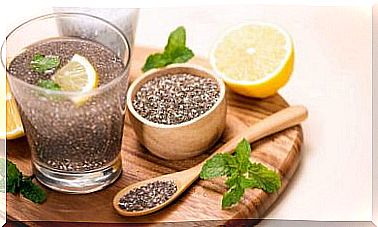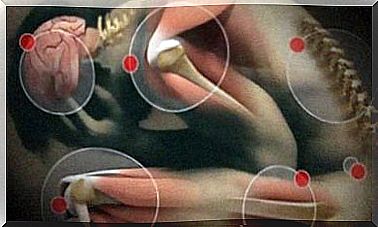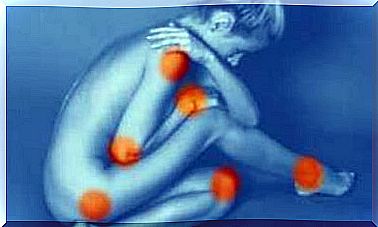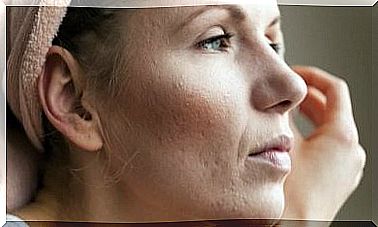Natural Remedies For The Treatment And Prevention Of Dermatitis
Aloe vera gel has anti-inflammatory, moisturizing, bactericidal and regenerative properties, which can allow us to relieve and calm the dermatitis. For this, it must be applied regularly to the affected area.
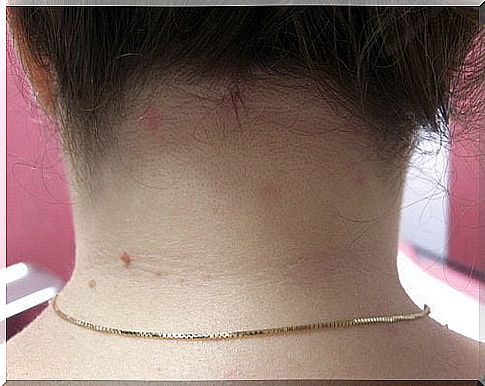
The different types of dermatitis
While some of their symptoms are similar, there are 5 different types of dermatitis that can appear at any time.
1. Contact dermatitis
It is not infectious and appears when the skin comes into contact with an irritant. It affects adults more regularly. Usually, the contact area is not the only one irritated, as this type of dermatitis can spread to surrounding areas.
It often occurs on the hands, feet or in the groin. The most common symptoms are pain, itching and redness.
2. Atopic dermatitis
Atopic dermatitis can be caused by both internal and external factors. It appears behind the knees, at the shoulders, or on the face. It is very common in children. In this case, it is known as childhood eczema and causes itching and inflammation.
3. Seborrheic dermatitis
This type of dermatitis is certainly the most common. It appears on the scalp and behind the ears but can also affect hairy areas like the eyebrows, face and armpits. It causes white or yellow, very oily scales.
Two of its typical manifestations are dandruff or seborrhea.
4. Diaper dermatitis in infants
This type of inflammation affects the lower extremities. Especially in the area of the crotch, thighs, genitals and abdomen. In fact, all the areas that are in contact with the diapers.
Indeed, the humidity and heat present in these areas, during the wearing of a diaper, allow bacteria to develop in a favorable environment.
5. Nummular dermatitis
It causes circular patches that are extremely itchy, causing purulent blisters, scales and scabs. It most often occurs in winter, in people over the age of 55, who have dry skin.
The main common symptoms are as follows:
- Itching
- Crusts
- Plaques that appear and disappear
- Skin texture similar to leather
- Bulbs or buttons
- Dandruff
- Redness
- Irritations
- Drought
The main causes are as follows:
- Allergies
- Contact or ingestion of an irritant
- Plants, like the street for example
- Use of cleaning products, such as soaps or disinfectants
- Metals, like gold and silver
- Insect bites
- Fabrics, such as wool
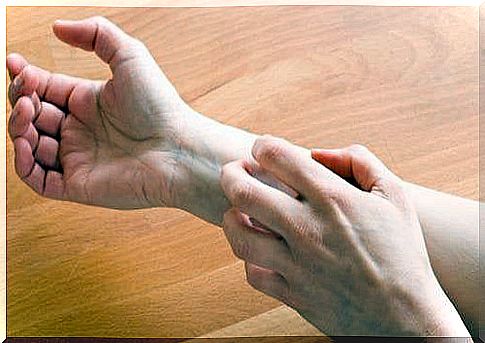
Other causes of dermatitis:
A poor diet
Adopting a diet based on heavy consumption of alcoholic beverages, animal fat, pasta, chocolate and fast food can cause dermatitis in some people.
Temperature
The cold or the heat can also aggravate this pathology. For example, the winter period can make it worse for people with dry skin, while the summer can cause dermatitis due to closer contact with certain types of tissue.
Genetic
The hereditary factor can be the cause of dermatitis in some people, especially in the case of seborrheic dermatitis.
Diseases
Diabetes is directly related to the appearance of atopic and nummular dermatitis.
The stress
Nervousness, anxiety, and being under constant pressure can lead to dander, dandruff, redness, or blisters.
Some recommendations to avoid dermatitis
Beyond the difference between the types of dermatitis, the advice we are going to give you will allow you to keep the pathology under control, or to prevent its occurrence:
- Use white soap. Fragrances added in many personal care and cosmetic products can cause irritation.
- Keep your nails short and clean. While it is not good to scratch, it is sometimes difficult to hold back. However, if your nails are dirty, it can increase the risk of infection.
- Avoid sudden changes in temperature or strenuous exercise. Sweating should be avoided if you suffer from inflammation.
- Hydrate your skin. Think about it especially in winter, because we tend to neglect our body more at this time of the year.
- Use cotton clothing. Before wearing them for the first time, wash them by hand with white soap. Then remove any lint or rough edges to protect your skin.
- Do not use feather cushions, lint and woolen bedspreads.
- Do not expose yourself to irritating products. Avoid contact with industrial chemicals, talc, aerosols, paints, toxic fumes, solvents, varnishes, etc. Also, do not use gloves to handle them, as they can make the eczema between the fingers worse.
- Avoid stress and tension. Thus, your skin will quickly regain its original appearance.
- Don’t scratch yourself. Because scratching makes the problem worse. Some people sleep with gloves so they don’t scratch while they sleep.
Natural remedies for dermatitis
Plants are always our best allies in the fight against health problems, whether external or internal. Choose one of the following herbs as a topical treatment for dermatitis.
Mallow
This plant contains mucilages which make it possible to soften the skin and to heal the wounds, as well as to eliminate the pustules and the buttons. Make a decoction to take advantage of its benefits.
Ingredients
- 40g dried mallow leaves
- 1 liter of water
Preparation
- Boil the two ingredients, let cool, then filter. Soak a cotton ball and apply it to the affected areas after washing, but do not rinse.
The aloe vera
Obviously, we find aloe vera for the treatment of dermatitis. This plant has anti-inflammatory, moisturizing, bactericidal and regenerative properties.
- Cut a stem, split it in half and then apply the gel from it to the area affected by dermatitis.
Calendula
This plant is absolutely fabulous. Because it is an antibiotic and a powerful anti-inflammatory. It is therefore perfect for combating contact dermatitis. You can prepare it in the form of an infusion.
Ingredients
- 1 spoonful of calendula flowers
- 1 cup of boiling water (250 ml)
Preparation
- Let the infusion sit for a few minutes, then filter.
- Wait for the infusion to reach room temperature,
- Then apply to the affected area using a cotton ball or swab.
